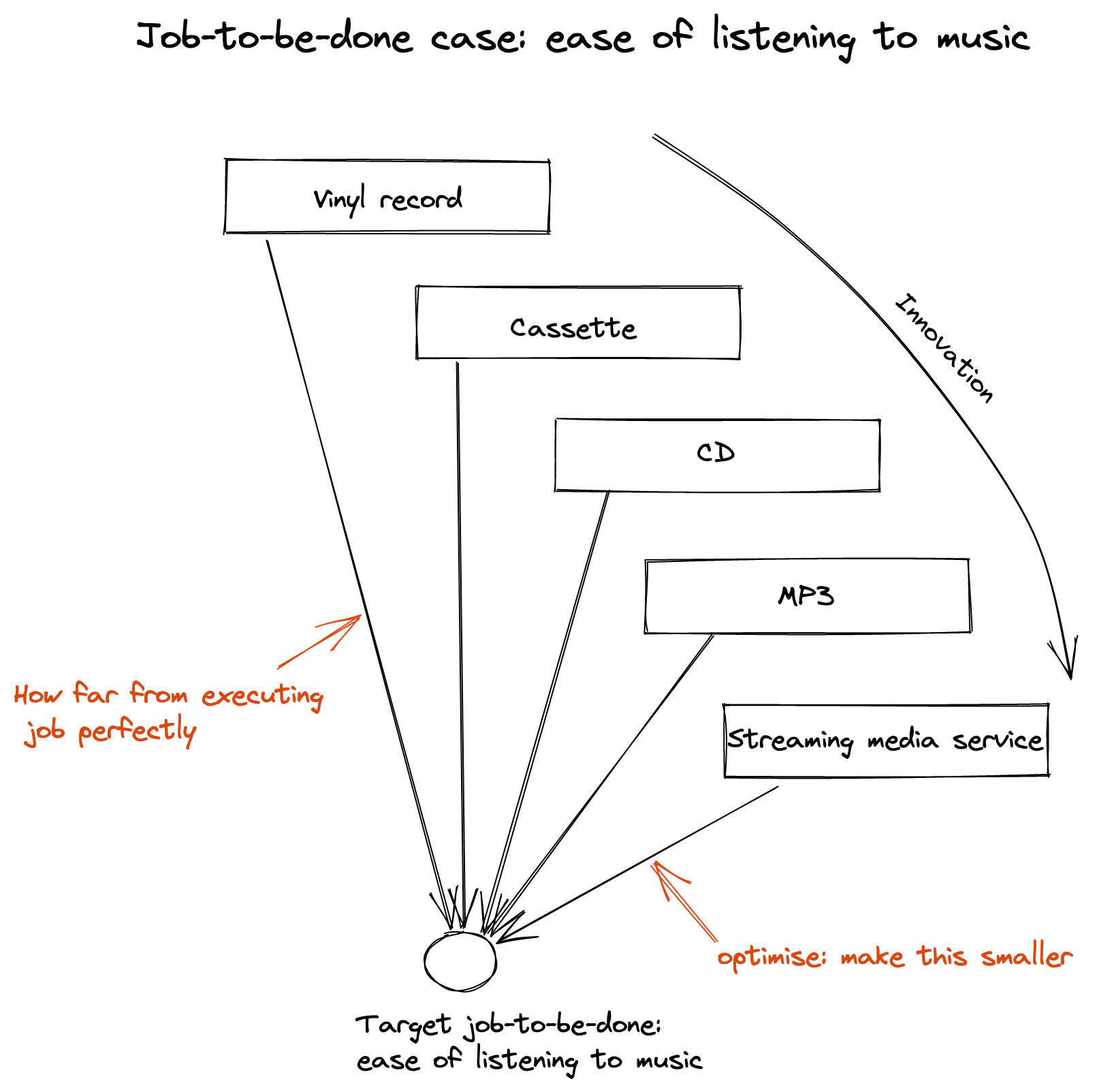Technology is the way we do things; it is a technique. When new technology arises, a better way of doing things has been created.
The combustion engines created a better way of going from point A to B compared to horses. Telephones created a better way to communicate with other people over long distances compared to post mail.
Many tech companies tend not to be aware of what is that “thing” for which they are creating a better way of doing. Businesses often focus on the product they are creating as opposed to understanding the customer need behind it.
To help mitigate this trap, Clayton Christensen coined the term jobs-to-be-done. Job-to-be-done is a model which forces you to figure out the real job that your product does. Harvard professor Theodore Levitt described this model with a simple example:
“People don’t want to buy a quarter-inch drill. They want a quarter-inch hole.”
A clear job-to-be-done for a drill is a hole. So in this case, technology is the drill, and the “thing” it is making easier is creating a hole.
When you innovate and build startups, you’re creating a technology - a better way to get a job done compared to previous solution(s). This means that every technological product should map to at least one job-to-be-done. Every builder should very clearly understand which job is his or her solution solving.
The goal of a tech company should be optimising their product or service for a specific job-to-be-done.
Let’s apply this model to the problem of listening to music:

Keep in mind that you don’t need to innovate a new technology or a product to better optimise your solution. This approach can be distilled down to smaller product features: “Will this button help my user with the job he or she hired my product for?”.
What happens if you keep optimising that problem indefinitely? If you continue optimising products for a job, after a certain point you will reach automatisation. An ultimate form of job-optimised service or a product is automatisation. In this scenario, the end customer is not aware of the problem at all.
For a previous example of making holes, this could be translated to producing products that drill their way into an object by themselves. This way end customer is not aware of the hole-problem at all. Thinking about how close to automation can you get for your company’s job-to-be-done is a great thought experiment.
“Civilization advances by extending the number of operations we can perform without thinking about them.” ~ Alfred North Whitehead
Now let’s extend job example for listening to music:

Another good way of applying this mental model is competition. In case there is competition, you can focus on job-to-be-done that is different from competitors. By understanding what is your job-to-be-done, you can focus all of your resources on optimisation activities for that particular job. You won’t have wasteful activities by competing for the same customers (same jobs).
What job-to-be-done is your company solving and how close is that job to automation? Let me know in the comments below or email me teotoplak95@gmail.com